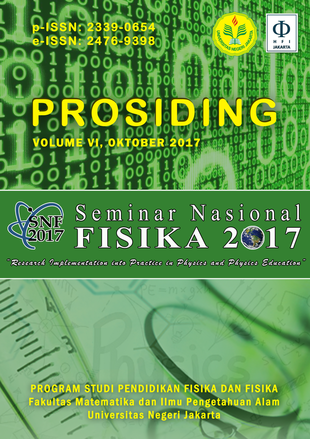ANALISIS SEBARAN PETIR CLOUD TO GROUND (CG) DI WILAYAH JABODETABEK PADA TAHUN 2016
DOI:
https://doi.org/10.21009/03.SNF2017.02.EPA.10Abstract
Lightning is an electrical event that occurs due to high-voltage, induced charge discharges from Cumulonimbus clouds. An induced charge may occur between clouds (Cloud to Cloud) or between clouds and ground (Cloud to Ground). The process of lightning discharge to the ground always travels the shortest distance with the smallest electrical resistance. Lightning strikes can have serious consequences such as electronic circuit breakage, telecommunication interruptions and fatalities. This study aims to analyze spatial and temporal characteristic of Cloud to Ground (CG) lightning strikes in the Jabodetabek area within one year. Research is useful for mapping the area and time prone to lightning strike events. The data used are obtained from the lightning detector image recorder operated by BMKG in 2016. The method of lightning strike density analysis is grouped in the three-month period of December-January-February (DJF), March-April-May (MAM), June - July-August (JJA). Lightning detector image recording is also validated with BMKG Tangerang weather radar image on the day of the greatest lightning strike event. The analysis results show that the peak of CG strike occurred in the MAM period around the Bogor area.
Keywords: cloud to ground, lightning, lightning detector





